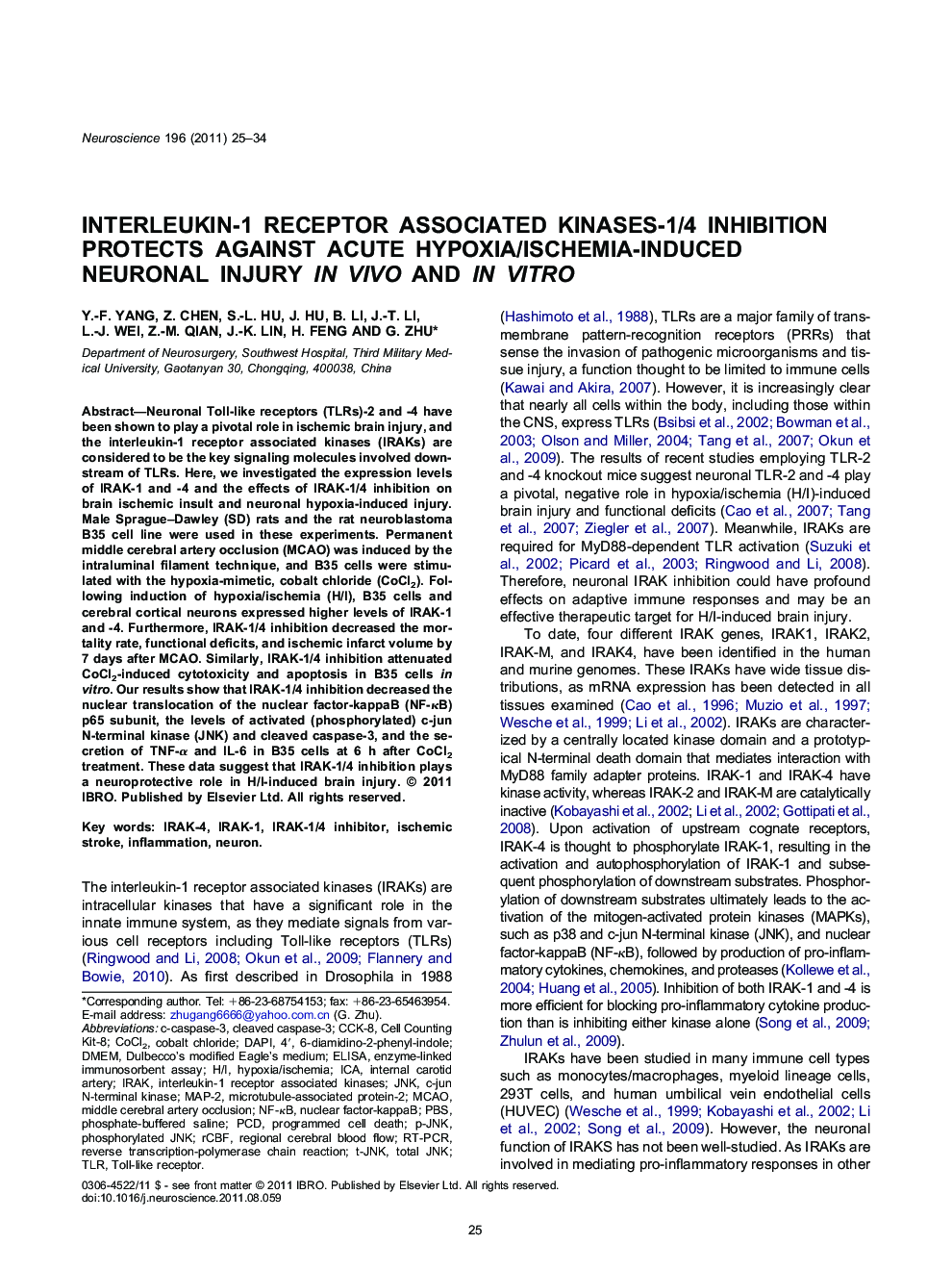| Article ID | Journal | Published Year | Pages | File Type |
|---|---|---|---|---|
| 6276213 | Neuroscience | 2011 | 10 Pages |
Neuronal Toll-like receptors (TLRs)-2 and -4 have been shown to play a pivotal role in ischemic brain injury, and the interleukin-1 receptor associated kinases (IRAKs) are considered to be the key signaling molecules involved downstream of TLRs. Here, we investigated the expression levels of IRAK-1 and -4 and the effects of IRAK-1/4 inhibition on brain ischemic insult and neuronal hypoxia-induced injury. Male Sprague–Dawley (SD) rats and the rat neuroblastoma B35 cell line were used in these experiments. Permanent middle cerebral artery occlusion (MCAO) was induced by the intraluminal filament technique, and B35 cells were stimulated with the hypoxia-mimetic, cobalt chloride (CoCl2). Following induction of hypoxia/ischemia (H/I), B35 cells and cerebral cortical neurons expressed higher levels of IRAK-1 and -4. Furthermore, IRAK-1/4 inhibition decreased the mortality rate, functional deficits, and ischemic infarct volume by 7 days after MCAO. Similarly, IRAK-1/4 inhibition attenuated CoCl2-induced cytotoxicity and apoptosis in B35 cells in vitro. Our results show that IRAK-1/4 inhibition decreased the nuclear translocation of the nuclear factor-kappaB (NF-κB) p65 subunit, the levels of activated (phosphorylated) c-jun N-terminal kinase (JNK) and cleaved caspase-3, and the secretion of TNF-α and IL-6 in B35 cells at 6 h after CoCl2 treatment. These data suggest that IRAK-1/4 inhibition plays a neuroprotective role in H/I-induced brain injury.
▶We confirmed the expression of neuronal IRAK-1/4 in cortex of SD rats and B35 cell line. And IRAK-1/4 inhibitor plays a neuroprotective role in neuronal ischemic/hypoxic injury. This neuroprotection may be associated with suppression of neuronal TLRs signaling.
